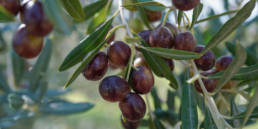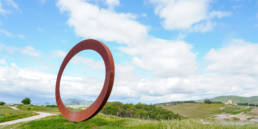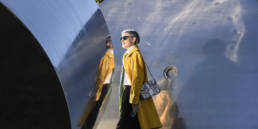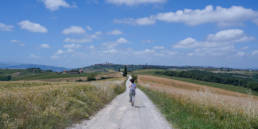There is something undeniably alluring about seeing a side of Tuscany that’s not in one of your travel agent’s well-thumbed holiday brochures. Maybe it’s the nostalgic dream we all have of finding that tiny provincial Italian town where the locals still sit in their gardens and watch the world pass by. Or maybe we just want to gloat authoritatively to friends back home about that ‘hidden oasis’ we found and how there wasn’t a tourist menu or souvenir shop in sight.
Whatever it is, the Tuscan Maremma ticks all the boxes when it comes to idyllic undiscovered destinations. The area presses its back to the borders of Southern Tuscany and Lazio so intently that you often wonder what region it wants to be in. The locals are sometimes called the sentinels of Tuscany, not by geographical definitions, but by something all together more innate. La cultura contadina or farmers’ culture is fastidiously preserved in the Maremma so that centuries’ old Tuscan traditions are not forgotten and the stories of the famous butteri (Tuscan cowboys) and briganti (brigands) are told to eager children again and again.
You could spend years exploring the Tuscan Maremma and only see a fraction of what this incredible area has to offer. So to start you off, here are three Southern Maremman towns where the dishes are all the sweeter because they were made to old family recipes and the locals still don’t quite understand what all the fuss over their homes is really about.
Montemerano

In Montemerano’s Piazza del Castello, medieval homes are almost entirely covered by the vines that have wound their way from old wine barrels up to burnt terracotta roofs. Every day, the same woman who has been watering all of Montemerano’s flowers for a decade carefully carries her red jug from pot to pot, stopping to chat to the Montemeranesi in the old town. These locals have lived in the same homes for generations. They’ve never had cause to leave. And why should they? Their homes were built by the Sienese knights of the 16th century. They’re sturdy and undeniably beautiful, made from butterscotch coloured stones that immediately remind tourists of scenes from Under the Tuscan Sun.
Montemerano doesn’t have a list of attractions you can visit and tick off with the satisfied sense that you have seen everything this town has to offer. In Montemerano, the real experience is in strolling through the streets and hidden piazzas, trying one of the small family run restaurants and sparing a special moment or two to admire the utterly understated, but completely beloved Chiesa di San Giorgio
Don’t miss: Montemerano’s annual festival of dragons and medieval magic, the Festa di San Giorgio, in April.
Sovana

Sovana has always been called the Regno della Maremma or Kingdom of the Maremma for it has seen Etruscan royalty, artist and poet kings and religious idols come and go in the millennia since its founding. Though it’s easy to see who has left the most lasting memory. On one end of town, a crumbling 12th century fortress is all that is left of the Aldobrandeschi kings, while on the other, the magnificent Il Duomo di Santi Pietro and Paolo stands as one of Europe’s most beautiful and last remaining Romanesque cathedrals.
In between the two monuments, Sovana unfolds as a town untouched by the centuries. Dotted between the houses are the small artisan workshops that make bespoke silk pieces and beautiful ceramics. The Sovanesi are natural artists. It’s in their blood. The Etruscans who set roots in Sovana, Suana as it was called then, were famous for their striking ceramics. The modern Sovanesi have kept the colours of their ancestors, the vibrant blues, reds and yellows, alive in their art today.
Don’t miss: The Etruscan necropolis in the Parco Archeologico del Tufo just outside of Sovana where these Etruscan hues can still be see on the magnificent statues and tombs.
Capalbio

Behind their walled fortress, the Capalbiesi live a seaside sort of life. From the first warm day in early spring to the first drop of autumn rain, they spend their siestas outdoors, reclining on the benches of the parapet wall, sticking their heads into the small bars for a coffee or a vin santo to while away the afternoon.
Capalbio is the last Southern Maremma town. Just beyond the wall, Burano Lake, sometimes called Walt Disney’s Lake for its enchanting flora and fauna, marks the start of a nature park that encompasses as far as the eye can see. But it’s what you don’t see that draws the tourists to Capalbio. Hidden behind the thick Mediterranean brush just outside of the city are some of Tuscany’s most incredible beaches. You won’t be able to resist making a beeline for Chiarone Beach, where the soft sand has been attracting political VIPs for decades.
Don’t miss: Capalbio is also home to the eccentrically fantastical Giardino dei Tarrochi, a garden filled with giant, handmade mosaic statues fashioned by French-English artist Niki de Saint Phalle.
Sign up to receive future blog posts by email
Elisa Scarton
Elisa Scarton is an Australian journalist who came to Tuscany for a year, fell in love (how cliché!?), and decided to stick around. Not one to keep paradisiacal holiday destinations to herself, she now writes a blog and online travel guide about the infinitely beautiful Tuscan Maremma, so that others can get a taste of la dolce vita.
Related Posts
November 17, 2021
My favourite suppliers of Tuscan olive oil
May 20, 2021
Volterra: Art, Wine and Minerals
January 17, 2021




